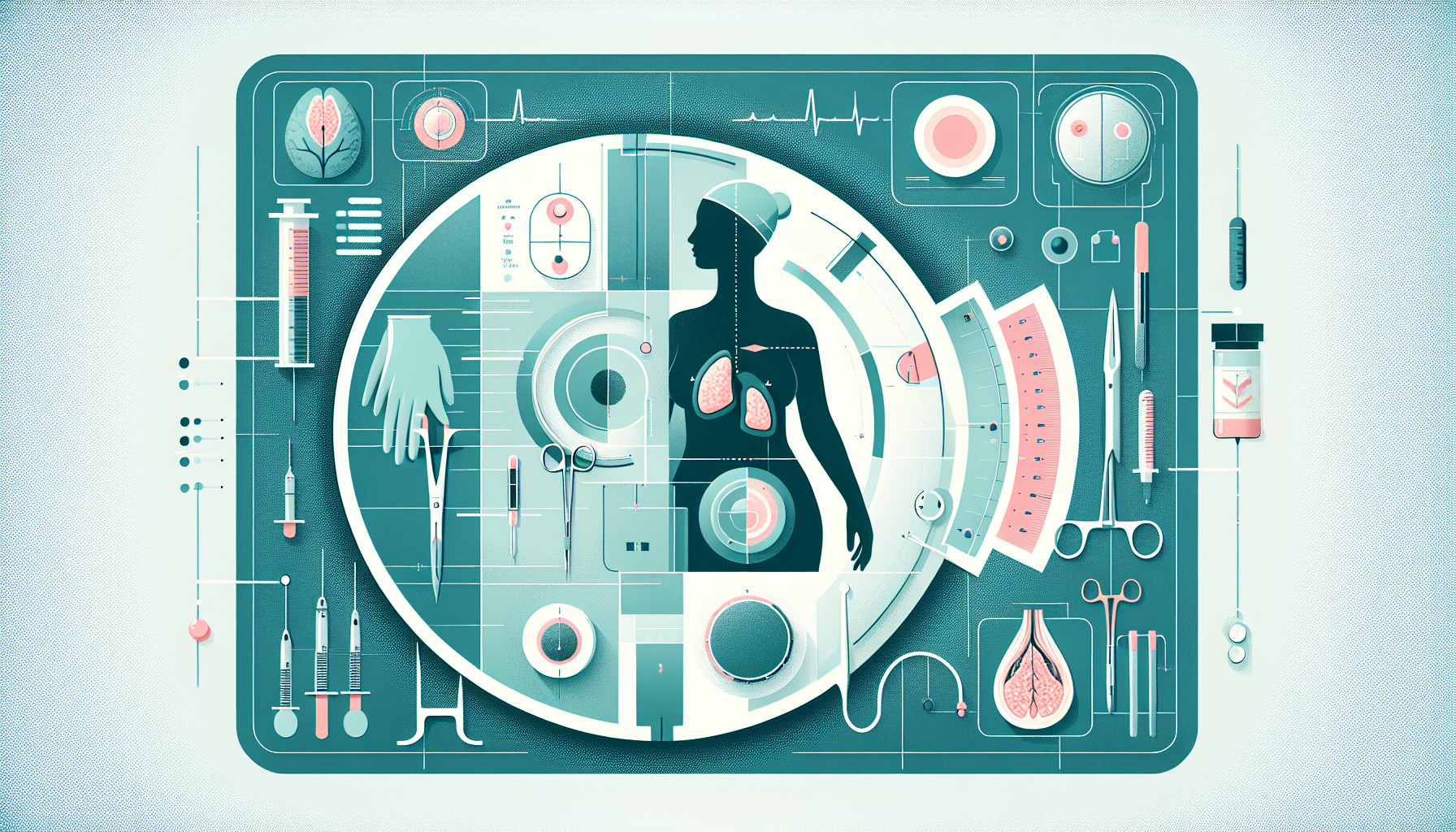Our Summary
This research involves the study of different types of mastectomy procedures (surgery to remove all or part of the breast) in patients who had a recurrence of breast cancer after initially having breast-conserving surgery and radiation. The three types of mastectomies evaluated were nipple sparing (NSM), skin sparing (SSM), and total mastectomy (TM). The study looked at patients who had these surgeries between 2011 and 2019.
The researchers found that the type of mastectomy or whether or not the patient had breast reconstruction didn’t make a difference in the rate of complications after surgery or the chance of the cancer coming back a second time. The only factor that seemed to predict a second recurrence was the size of the tumor at the time of the recurrence.
In other words, patients who had a recurrence of breast cancer after initially conservative treatment, and who then had either a nipple sparing or skin sparing mastectomy with immediate reconstruction, had about the same low rate of complications and the same chance of the cancer coming back a second time as those who had a total mastectomy.
FAQs
- What types of mastectomy procedures were evaluated in this research study?
- Did the type of mastectomy or the decision to have breast reconstruction impact the rate of complications after surgery or the chance of cancer recurrence?
- What was identified as a predictive factor for a second recurrence of breast cancer after mastectomy?
Doctor’s Tip
One helpful tip a doctor might give a patient about mastectomy is to discuss the different types of mastectomy procedures (nipple sparing, skin sparing, total mastectomy) and how they may impact their individual situation. It’s important for patients to understand their options and make an informed decision with their healthcare team. Additionally, maintaining a healthy lifestyle, following post-operative care instructions, and attending regular follow-up appointments can help optimize recovery and long-term outcomes.
Suitable For
Patients who are typically recommended mastectomy include:
- Patients with a recurrence of breast cancer after initially having breast-conserving surgery and radiation
- Patients with large or multiple tumors in the breast
- Patients with a genetic predisposition to breast cancer, such as BRCA1 or BRCA2 mutations
- Patients with a strong family history of breast cancer
- Patients with a history of chest radiation therapy
- Patients with dense breast tissue that may make it difficult to detect cancer on imaging
- Patients with inflammatory breast cancer
- Patients who have had previous breast cancer surgery that may make further lumpectomy difficult.
It is important for patients to discuss their individual case with their medical team to determine the most appropriate treatment plan.
Timeline
Before mastectomy:
- Patient is diagnosed with breast cancer and undergoes initial treatment such as chemotherapy and radiation therapy.
- Patient and healthcare team discuss treatment options, including the possibility of mastectomy.
- Patient undergoes pre-operative testing and preparation for surgery.
- Patient may meet with a plastic surgeon to discuss reconstruction options.
During mastectomy:
- Patient undergoes surgery to remove part or all of the breast tissue.
- Depending on the type of mastectomy, the nipple and skin may be preserved or removed.
- If desired, immediate breast reconstruction may be performed during the same surgery.
After mastectomy:
- Patient recovers in the hospital and receives post-operative care.
- Patient may experience pain, discomfort, and limited mobility in the chest area.
- Patient may need to wear a compression garment and perform exercises to aid in healing.
- Patient may undergo additional treatments such as chemotherapy or hormone therapy.
- Patient may attend follow-up appointments with the healthcare team to monitor recovery and address any concerns.
Overall, the timeline before and after mastectomy can vary for each patient depending on individual factors such as the type of surgery, extent of breast cancer, and overall health. It is important for patients to work closely with their healthcare team to ensure the best possible outcomes and support throughout the process.
What to Ask Your Doctor
- What type of mastectomy procedure do you recommend for me based on my specific situation?
- What are the potential risks and complications associated with each type of mastectomy procedure?
- How will each type of mastectomy procedure affect my physical appearance and body image?
- What is the typical recovery time for each type of mastectomy procedure?
- Will I need additional treatments, such as chemotherapy or radiation, after the mastectomy?
- Will I be a candidate for immediate breast reconstruction after the mastectomy?
- How will each type of mastectomy procedure impact my risk of the cancer recurring in the future?
- How often will I need follow-up appointments and mammograms after the mastectomy?
- Are there any lifestyle changes or precautions I should take after the mastectomy?
- Can you provide me with information about support groups or resources for mastectomy patients?
Reference
Authors: ElSherif A, Armanyous S, Al-Hilli Z, Valente SA. Journal: Am J Surg. 2022 Mar;223(3):447-451. doi: 10.1016/j.amjsurg.2021.11.028. Epub 2021 Dec 15. PMID: 34955166
